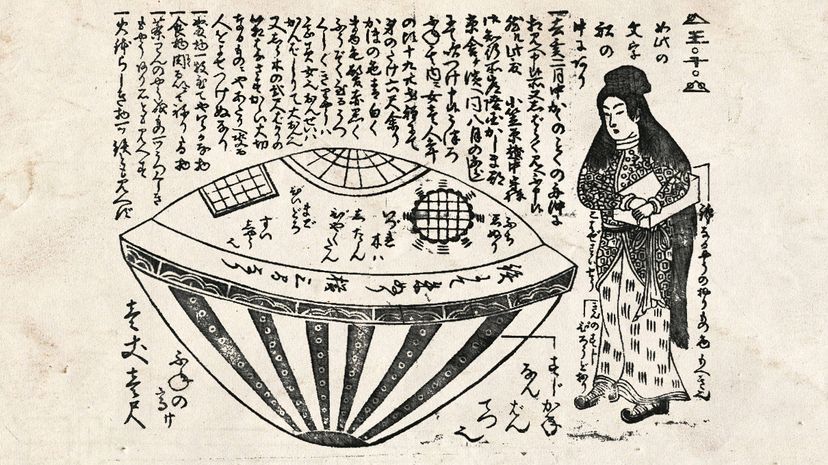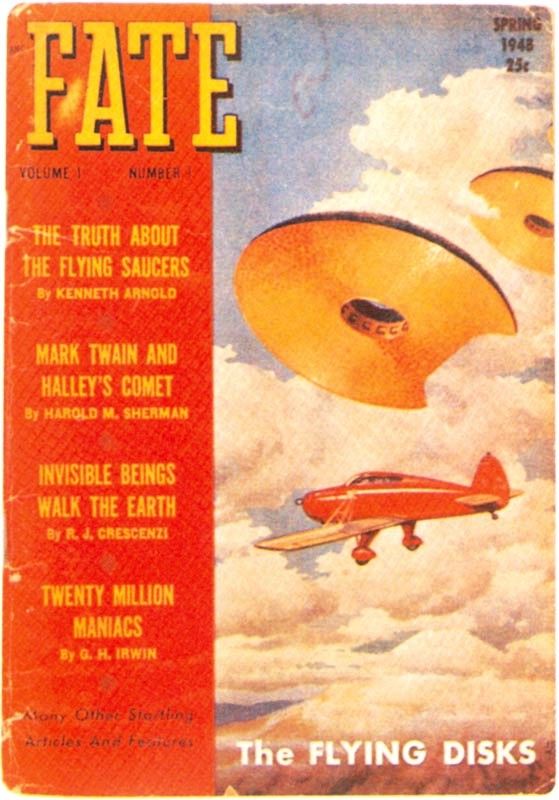
On Feb. 22, 1803, a strange boat washed ashore in Japan. It was something the fishermen there had never seen before — a disc-shaped vessel, with windows on top and metal bands below. Inside they found strange writing etched into the walls, unusual fabrics they likened to bedsheets or carpet, and a passenger, a young, beautiful woman clutching a square box. She had red hair and pale pink skin, and she wore fine clothes, also made from strange fabric.
She spoke an unfamiliar language and refused to reveal the contents of the box she held. Could she have been an alien of some kind? Did these humble Japanese fishermen witness a close encounter? The hosts of Stuff They Don't Want You To Know, Matt Frederick and Ben Bowlin, examine the evidence in the podcast Utsuro-Bune: Ancient Japanese UFOs.
Advertisement
The legend of the story is known as the utsuro-bune, or "hollow ship." The fishermen at the time theorized that the woman was a princess from a foreign land, exiled for a torrid affair with a peasant. Perhaps she carried the head of her deceased lover in the box, and protected it so carefully for that reason. Ultimately the fishermen decided to put her back in her ship and set her adrift to meet her destiny.
Over time, some have suggested the fishermen encountered an alien, not a woman. The boat obviously wasn't a UFO, because it didn't fly, but it could have been a USO, or unidentified submarine object. The most compelling evidence is the ship itself. In the texts describing the incident, the men likened the ship to a rice pot or an incense burner. The metal bands and hard glass windows were nothing the fishermen had seen before. And the writing on the ship has been compared to similar alien symbols found on the hulls of crafts from Roswell, New Mexico and the Rendlesham Forest incident.
There are more plausible explanations behind the encounter, however. Others suggest the woman was Russian and coming to persuade the Japanese to trade with them — or even to spy on them. The incident occurred during the Edo period when Japan's borders were strictly controlled, and the country traded only with China and the Netherlands. That isolation could also account for why the ship looked so unfamiliar to the fishermen. Round ships were not uncommon at the time, but the metal and glass encasings were.
The simplest explanation is that a round log-boat was covered with a dome to make it more seaworthy. But what about the writing on the ship, and the mysterious box the young woman carried? Could there really have been more to the story than meets the eye? Listen to the podcast to see what Matt and Ben think and then decide for yourself.
Advertisement


